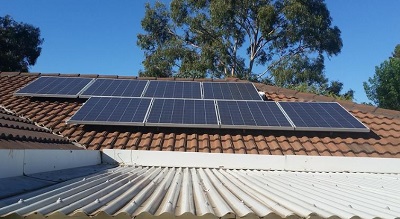Solar Panel Orientation: Maximizing Efficiency
Why Is Solar Panel Orientation Important?
When it comes to getting the most out of your solar panels, orientation is key. The direction your panels face determines how much sunlight they capture, which directly impacts how much electricity they generate. If your panels aren’t positioned correctly, you could be losing out on a significant amount of energy. Understanding the right orientation ensures you maximize efficiency, reduce energy costs, and get the best return on your solar investment.

How to Determine the Best Direction
So, which way should your solar panels face? The answer depends on where you are in the world. In the Northern Hemisphere, panels should generally face true south, while in the Southern Hemisphere, true north is the ideal direction. This ensures they get the most direct sunlight throughout the day.
That said, real-world conditions like roof angle, nearby shading, and local climate can influence the best orientation. To get the most accurate recommendation for your location, tools like this solar orientation calculator can be incredibly useful.
The Science Behind Solar Panel Angles
The tilt angle of your solar panels is just as important as their direction to maximize sunlight absorption. A general rule of thumb is to set your tilt angle equal to your latitude for optimal year-round performance. But for those who want to squeeze out every last bit of efficiency, adjusting the tilt seasonally can help.
For example, let’s look at two locations:
- In Australia (e.g., Sydney at 33°S), an ideal fixed tilt would be around 33°, but tilting slightly steeper in winter and shallower in summer can optimize performance.
- In the US (e.g., New York at 40°N), a tilt of about 40° is optimal, with similar seasonal adjustments improving efficiency.
Essentially, during winter, the sun sits lower in the sky, so tilting your panels on more of an angle towards the horizon a bit helps them capture more sunlight. In summer, when the sun is higher, a shallower tilt works better.
Winter vs. Summer Mounting & Finding the Best Fixed Position
If you’re installing solar panels with a fixed mount, you’ll want to find a good balance between summer and winter performance. A tilt angle equal to your latitude is a great starting point, but if you’re able to adjust them seasonally, here’s what to do:
- In winter: Increase the tilt by 10-15° to compensate for the lower sun angle and capture more sunlight.
- In summer: Decrease the tilt by 10-15° to prevent overheating and maximize midday sun exposure.
For those who live in areas with extreme seasonal differences, an adjustable mount can significantly boost energy generation. However, if adjusting seasonally isn’t an option, sticking to the standard latitude tilt is a solid compromise that works well year-round.
Fine-Tuning Based on Energy Usage
In addition to positioning your solar panels based on geographic location and seasonal adjustments, you can further optimize energy generation by considering your peak energy usage times. Tailoring your solar panel orientation to align with your daily energy demand can make a noticeable difference in maximizing self-consumption and reducing reliance on the grid.
Peak Energy Demand and Orientation Adjustments:
- Eastward: If your energy usage peaks in the morning, orienting your panels slightly eastward will allow them to capture more sunlight earlier in the day, which is especially useful if you need energy during the morning hours.
- Westward: If your energy usage is higher in the late afternoon or evening, orienting your panels slightly westward will allow them to capture more sunlight later in the day, giving you more energy when you need it most in the evening.
These fine-tuning adjustments are especially beneficial if you're aiming for self-consumption (using your generated energy directly) or if your grid tariff has different rates for peak/off-peak hours. By optimizing your solar panel output for your energy usage patterns, you can reduce your reliance on more expensive grid power during peak tariff periods.
Common Mounting FAQs and Misconceptions
There’s a lot of misinformation floating around when it comes to solar panel mounting. Let’s clear up a few common myths:
- Should panels always face directly south or north? – Not necessarily. While true south (or north in the Southern Hemisphere) is optimal in most cases, factors like local weather patterns, roof orientation, and even time-of-use electricity rates can make slightly different angles more beneficial.
- Does a steeper tilt help keep panels clean? – Yes! Panels tilted at a steeper angle allow rain to wash off dirt and debris more effectively, reducing the need for manual cleaning.
- Can solar trackers eliminate the need for proper orientation? – Not entirely. While solar trackers adjust to follow the sun, having a well-oriented base positioning still makes a significant difference in performance at a fraction of the cost
- Is it okay to mount panels flat? – While flat-mounted panels might work for some setups, they often accumulate dirt more quickly and don’t perform as efficiently as properly tilted ones.